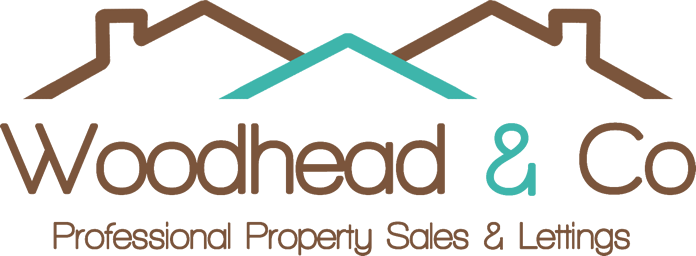Wellingborough Property Market Update – November 2023
With Halloween already behind us, we have ten month’s worth of Wellingborough property market data to look back at hypothesise about what may happen in the coming months.
The average asking of all properties for sale in October was £272,855 (£5,633 – or 2% – lower than September).
Does this confirm with some of the media narratives of a ‘market crash’? Not quite.
The asking prices of properties for sale in Wellingborough in the same month of 2022 was £271,923. So, in the last 12 months, average asking prices have actually risen by £932 (0.3%), and from January 2021 (when I first started to collate the data) they have risen by £57,271 (26.6%)!
 Asking prices of properties that are for sale are seemingly levelling out, but I’m not entirely sure the same can be said for the asking prices of sold properties where there appears to be a downward trend as 15-year high interest rates, inflation and general cost of living weigh on the housing market.
Asking prices of properties that are for sale are seemingly levelling out, but I’m not entirely sure the same can be said for the asking prices of sold properties where there appears to be a downward trend as 15-year high interest rates, inflation and general cost of living weigh on the housing market.
Despite holding interest rates at 5.25% for the second consecutive meeting earlier this month, the Bank of England had previously increased rates 14 times from 0.1% in 2021. This has clearly had an effect on borrowing and borrowers, reducing the amount most people are able to afford, and therefore selling prices of properties.
Morgan Stanley, the investment bank, says the Bank of England is planning to lower interest rates starting in May, which is good news for people with mortgages. In a message to clients, the big Wall Street player foresees policymakers bringing rates down to 4.25% by the end of the next year as food and core goods prices ease.
This prediction of a May cut comes a week after Huw Pill, the Bank of England’s chief economist, mentioned that it wouldn’t be “unreasonable” for investors to expect a rate cut next summer.
In the coming week, Britain will get the lowdown on the latest inflation numbers for October, and many expect the consumer prices index to dip below 5%. The Prime Minister had made a commitment to slash inflation by half by the end of the year, meaning it has to fall below 5.3%.
Moving home is usually a personal matter. The need for more or less space, a move to for a new job or relationship, or a myriad of other reasons that aren’t purely financially motivated.
But of course, finances do play their part in the decision making process. As it stands, the average difference between the asking price of newly listed properties and sold properties stands at £46,364 (22%) and it doesn’t seem that price reductions will reduce that deficit either (although this is a significant reduction from last months’ difference of £69,940 (29.3%)).

This suggests to me that the market hasn’t found it’s level yet. The discrepancy between the average asking price properties are listed for and the asking price of sold properties is still too high.
Last week, Halifax reported a 1.1% increase in home values for October, ending a six-month decline. This was attributed to a delay in listing houses for sale and a tightening of supply, as sellers opted for a cautious approach rather than accepting lower prices.
However, the latest data from Rightmove indicates that those actively seeking to sell still find it necessary to adjust their price expectations due to high borrowing costs. Tim Bannister, Director of Property Science at Rightmove, noted that the larger-than-usual drop in new seller asking prices suggests a shift. Sellers seem to be heeding advice from their agents, aiming for more attractive prices to distinguish themselves from overly optimistic competitors amid the Christmas season.
If, however, asking prices were to fall by 5%, they would be £259,212 (approximately the same as they were in June last year)
If they were to fall 10%, they would be £245,570 (equivalent to October 2021 prices)
Lettings
The average asking rent in Wellingborough rose from £893 in September to £902 in October. This is only a month-to-month increase but follows an ongoing trend that is likely to continue, and represents an increase of £123 (15.8%) from the same month last year and £199 (28.3%) from when I started collating the data in January 2021.

Aneisha Beveridge, the Head of Research at Hamptons, has stated that the Bank of England’s efforts to combat inflation have had a more pronounced impact on the rental sector compared to other segments of the housing market. She emphasized that a combination of persistent long-term supply challenges and escalating expenses for landlords is exerting upward pressure on rental rates. Beveridge anticipates that these pressures are unlikely to diminish in the near future, leading to a continued increase in rents over the coming years.
According to Hamptons, the average rent for newly leased properties in Great Britain surged by 9.9% in July. This marked the 27th consecutive month in which rental growth exceeded 5%. Despite the affordability challenges faced by tenants, the ongoing shortage of available rental properties, along with rising costs for landlords, will persist in driving rental rates upward.
The company reported a 43% decrease in the number of rental homes available in Great Britain in July compared to the same month in 2019. Additionally, since 68% of landlords in the private rental sector (PRS) have some form of financing for their buy-to-let properties, fluctuations in interest rates will play a crucial role in determining rental prices.
Hamptons predicts that larger increases in rental rates for this and the following year will occur as landlords transition from fixed-term buy-to-let mortgage deals to substantially higher mortgage payments. Consequently, the average monthly rent for homes in Great Britain is expected to reach £1,550, representing a £333 increase compared to December 2022.
*All data sourced from Zoopla Pro
If you want any more information, or would just like a chat about the current market, please feel free to get in touch. Thanks for reading
Lianne Woodhead
Director
01933 837000
lianne@woodheadandco.co.uk

